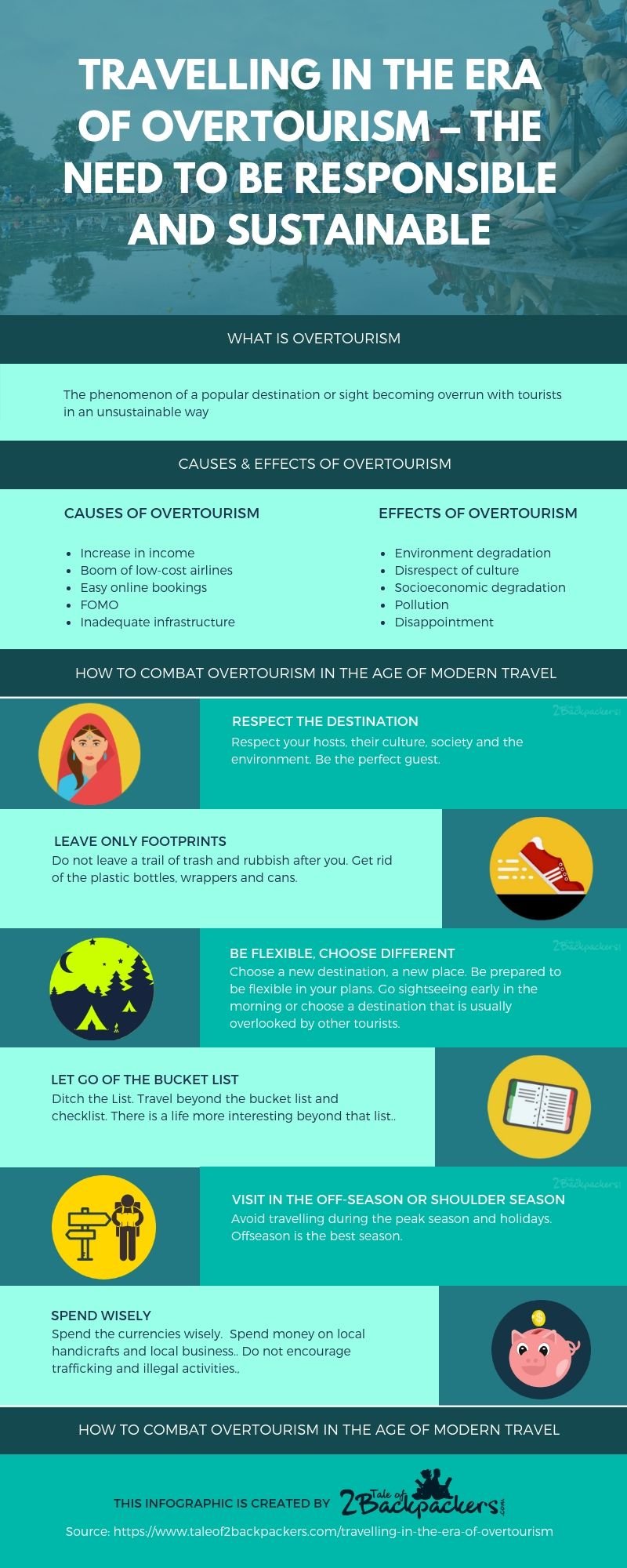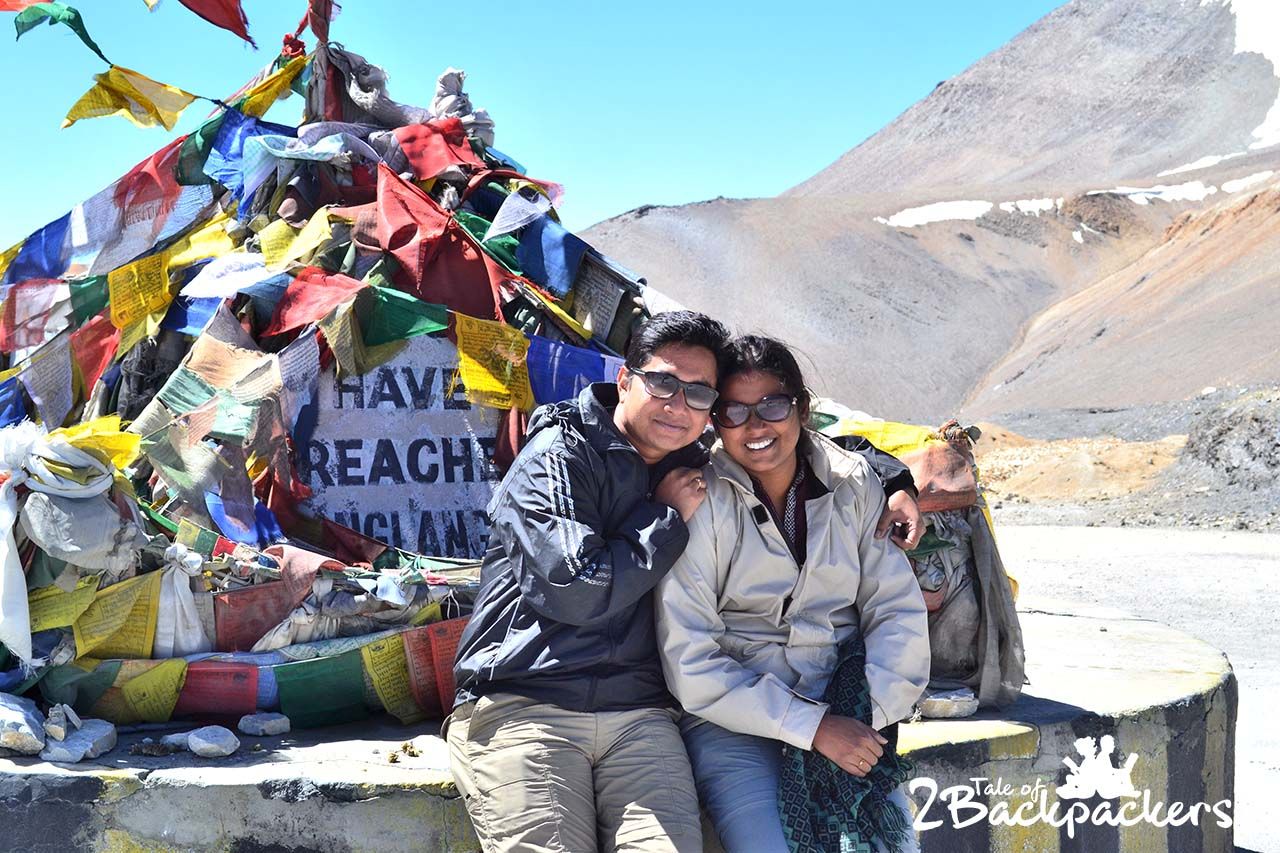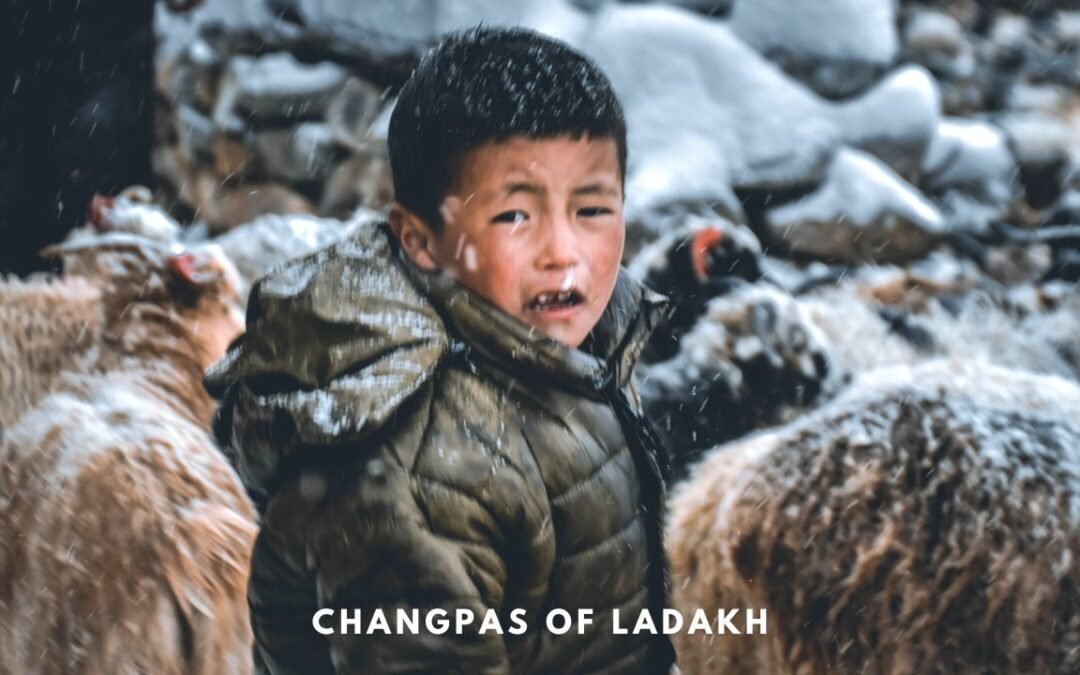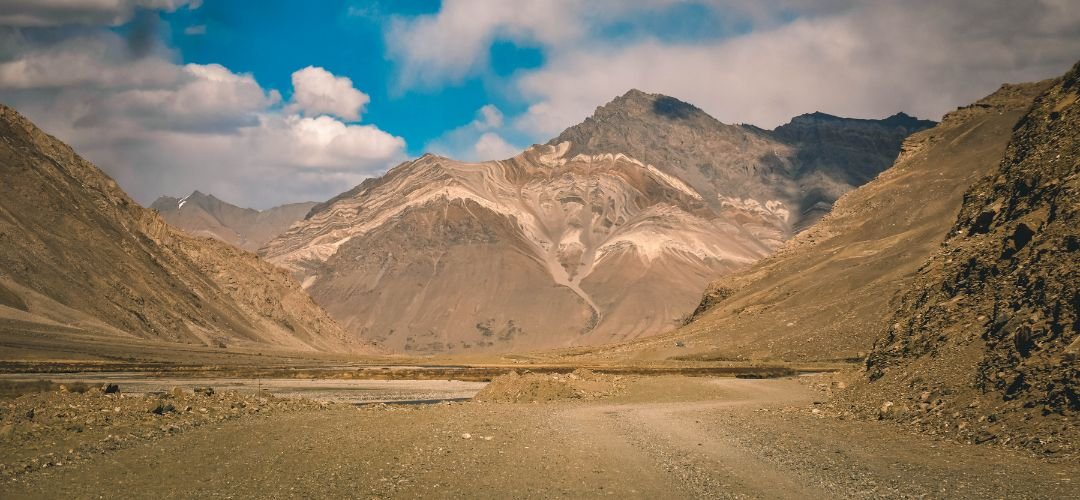As the world becomes smaller and places getting more accessible, travel and tourism is no longer the luxury for the chose few. And with more and more people exploring the world, comes the problem of overtourism and mass tourism. This is not a one-day phenomena, neither it is going to get away any soon.
When we visited the Taj Mahal for the first time. Excited to visit one of the seven wonders of the world, we arrived with the desire to take a perfect picture of both of us in front of the monument of love (as if the picture would prove our undying love for each other). But what we encountered at the Taj was a maddening crowd. Yes, I would call it a crowd. By the time we got our entry tickets and managed to snake through the queue of endless visitors, we were already tired. I was sad. We could not get that perfect picture! At that moment, we thought only about not having the perfect ‘Taj’ experience, but this is a phenomenon to stay. These days everyone talks about it – how the increasing tourism influx in a popular destination has led to the immiseration of locals and tourists. We know it as overtourism or mass tourism.
A few days back during the summer, there were a few social media posts being circulated asking tourists not to visit Shimla. The quaint hill station was no longer able to bear the pressure of handling so many tourists. Just a week back, my uncle told me that there were no hotel rooms available at Digha during the Christmas time, the popular beach destination in West Bengal. The only one available was asking for INR 10000 per night and it is insane.
And then I see the number of tourists at Pangong Lake. When we visited in August 2013, there were only 5 to 6 people near the famous stretch of the lake. 5 years later, my friend shows me the picture of the lake with hundreds of tourists! I feel a bit sad. Even the mountains are not spared. The Roopkund trail now looks like a market with so many tents pitched on the meadows. Infact, over-trekking is also harming the Himalayas.
Read our post on : IMPACT OF OVER TREKKING ON HIMALAYAS.
So what is Overtourism?
I tried to search google for the definition of overtourism. The only dictionary definition was found in Collins Dictionary and it defined overtourism as “The phenomenon of a popular destination or sight becoming overrun with tourists in an unsustainable way”.
Popular destinations have always existed since people learnt to travel. Even without the internet, the famous hill stations and beaches, museums and historic sites have been the favourite travel destinations for the masses. So why is such brouhaha over it now? It is the sheer volume and accelerated growth of tourists all around the world that is causing the problem. According to the UNWTO reports, 2017 had a remarkable growth of 7% in international tourists arrival.
1.3 billion tourists travelled across the world in 2017.
This trend exceeded UNTWO’s forecast for 2018 in the first quarter of 2018. International tourists arrival grew 6% during January to April as against the forecast of 4%. The numbers are only expected to grow.
So why is overtourism happening now – Causes of overtourism
Why are the popular destinations being loved to death? Why are there more tourists than ever? The simple answer is that today travel has gone from a luxury product to an everyday good. The world is getting richer with the growing middle-class in the developing countries. One of the most notable is the emerging markets of China. At the beginning of the 21st century, only 10.5 million overseas trips were made by the Chinese residents. In 2017, the figure was a staggering 145 million and is expected to go to 400 million in 2030. Even India is not left behind.
With this, there is a boom in low-cost airlines transporting travellers to their preferred destinations, cruises that take passengers into the beautiful port cities and long distance buses offering low prices to travel. And then it takes only a few clicks to get the perfect accommodation and make online bookings.
And then there is the FOMO (Fear of Missing Out) syndrome. The pressure to get the perfect Instagram shot and ticking off the bucket list has added to a popular destination being visited to death.
But do these places have the capacity to handle the pressure of increasing tourists? Infact, most of the destinations were not prepared to handle such large tourism growth. Neither they had proper infrastructure like roads, transportation, water, sewer and trash collection to protect the fragile sites and ecosystems.
What are the harms of Overtourism – effects of overtourism
Tourism is supposed to bring economic upliftment and development of a region. It creates jobs and helps the economy. So why the harm? Tourism does all that, but as they say, excessive of something good takes away the sheen.
The first recognizable problem of overtourism that you can see is environmental degradation. Disposal of trash, plastics remains a major problem. And with that harm to forests and the environment.
On our Amarnath Yatra, while we were mesmerized with the beauty of the Seshnag Lake, we were equally appalled to see the number of plastic wrappers and chips packet dumped on the way. It does not look beautiful at all.
Mt. Everest has perhaps become world’s highest dumping ground.
Which is not at all good. A few beaches in Phillipines and Thailand have been closed down indefinitely to reverse the harm that has already been caused in their ecosystem.

The subtle effect of overtourism can be seen in the lives cultural and socioeconomic degradation of a place. Sometimes while trying to stay like a local, we are causing indirect harm to the locals. Tourists often tend to disrespect a place and culture. Yes, we have seen a few tourists at Lataguri jungle safari with Beer bottles in their hand looking to see tigers! (Lataguri forest does not have tigers)
The problems of trash, noise pollutions, long trails of vehicles are also there. And so the residents of the perennially popular places like Barcelona, Amsterdam and Venice are complaining. They are fed up with the crowds and want the tourists to go back.
From the tourist point of view, you can feel overtourism when you take the trip of your lifetime only to find the thousands of other people at the same place at the same time. You will perhaps not get or have to wait a long for that perfect place for the perfect Insta shot. The miseries of long queues, crowd, over price, opportunists are also there. In short, the perfect trip could turn out to be a disappointment.
So, should we all stop travelling? Is the solution to overtourism is to stop travelling?
Not at all. We cannot campaign that we stay at home and save all these destinations. We cannot deny anyone the privilege of seeing the beautiful mountains and the serene beaches. Nor can we take away the opportunity to meet people and get newer experiences. We all deserve to experience the magic of travel.
Overtourism is definitely a problem. But the benefits of travel is a reality too. Tourism industry is a great contributor to the growth of economy, business and communities. The personal benefits of travel are always there. And here comes the concept of responsible and sustainable tourism. The Governments are stepping in. In some place that means higher prices and more permits. The Peru Government has now restricted the number of visitors to the famous Machu Picchu trail. Bhutan has a unique way of tackling the problem of overtourism in the way of its permit.
We, as travellers can act consciously and responsibly towards the benefit of a destination. We need to do so for our own interest in travelling.
Here are our suggestions for travellers and tourists that could help combat the menace of overtourism. Our conscious choices as travellers can affect a destination positively and also enhance our enjoyment.

How to combat overtourism in the age of modern travel
Respect the destination
Just remember that the place you are visiting is also the home to many people. as you would not like your house to be disrespected, please do not do so with others as well. As travellers, we are the guests. Just as our hosts welcome us warmly, we must respect our hosts, their culture, society and environment as well. Do not be that drunk tourist roaming along like crazy.
Respect their culture. If a place demands for a certain type of clothing, please be ready to accept so.
Leave only footprints
This is perhaps the most important and most discussed one. Do not leave a trail of trash and rubbish after you. This has been said and done a lot of times, yet it is disregarded the most. Try to get rid of those plastic bags and bottles.
It really looks terrible when you see a plastic bottle in the crystal clear water of Shnongpdeng or the toffee wrappers strewn along a trekking trail. And that includes in cities and towns as well. Because I have seen many who keep the mountains clean, but once they are at the plains, they forget the etiquette they showed on the mountains.
Choose different
Overtourism is infact concentrated only in certain destinations. Globally, it has been reported that around 70% of the travellers are concentrated in 20% of the countries. You can choose a different destination for travelling.
Within the country too, you can select lesser-explored destinations. For example, instead of staying at the already crowded Pelling, you can choose to stay at Rinchenpong. Go for offbeat trek routes. Instead of crowding the Roopkund trail, go for alternative trek routes.
Read our post on : OFFBEAT PLACES IN MEGHALAYA
Let go of the Bucket List
The Bucket list and checklist is mainly fueled by the social media frenzy and the FOMO syndrome. I know a few people who want to travel to a certain place because their ‘friend has bragged about the place on SM’. Well, that is not the reason you should travel. Travel is not a competition. Neither it is a way to brag your status symbol.
Ditch the List. There is life beyond every list!
Well, there are some iconic places that you might want to go just for the sheer beauty of it. May be, you should visit the place at off-season.
Visit in the off-season or shoulder season
Most of the pressure of tourists crowds that overtourism speaks of are mostly during the peak season. Shimla, Manali, Darjeeling and Gangtok find it difficult to bear the tourist pressure during the summers. Visit these places during the winter.
Avoid travelling during the peak season and holidays. Recently, we visited Myanmar in October, just before the beginning of their peak time. We were pleasantly surprised at the less number of tourists at Bagan.
Be flexible in your plans
Whether you visit a place during the low season be prepared to be flexible in your plans. Go sightseeing early in the morning or choose a destination that is usually overlooked by other tourists. Be ready to change your destinations on the go.
Spend wisely
While tourism can income to thousands of people, create jobs and boost economies, it can also create problems if not spent wisely. For example, we do not give money to beggars and children anywhere. Spend the money on local handicrafts and local business.
Our Views
Travelling is a great teacher. Those who have realized the beauty of travel, they already know their responsibility towards the destination and society, at large. It is up to us to make decisions that impact our experiences and the destinations that we visit positively. Because we care.







Good article!
Thank you Riju! Glad that you liked it.
This is such informative article. Every point you talked about is just too true and we cant ignore the over tourism part only we have to travel responsibly. Save nature, save yourself 🙂
Than you Pamela. The onus is on us so that we can keep travelling. 🙂
A new thought for responsible travellers.
But it is not possible to restrict over tourism without intervention of Govt.
That is quite true. But the thought has to come from individual travellers. Only then some change can be seen.